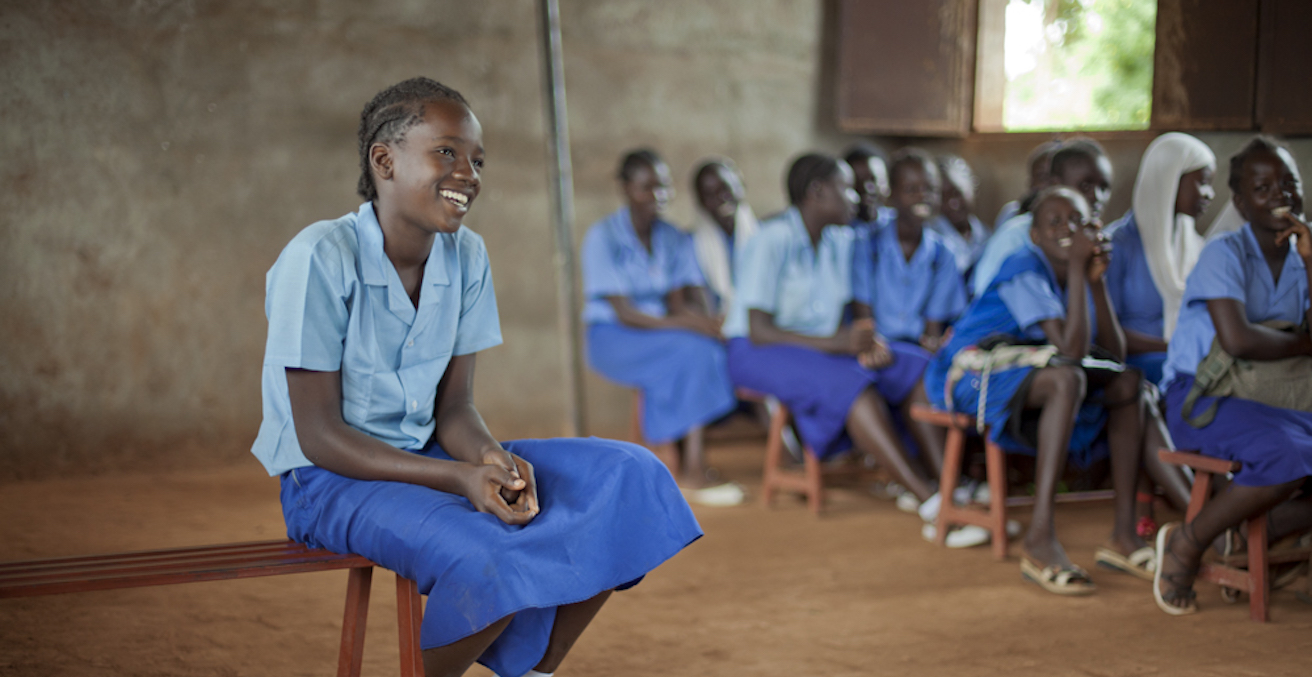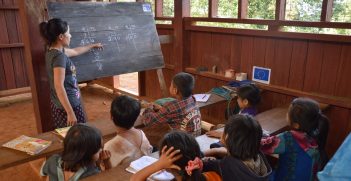Prioritising Education for Adolescent Girls in South Sudan

As the South Sudan conflict enters its fifth year, there remain significant barriers to accessing education, particularly for adolescent girls. On World Day Against Child Labour, a focus on education must be at the heart of South Sudan’s recovery.
The conflict in South Sudan is now entering its fifth year: about the same amount of time that most adolescents spend in secondary school. The protracted nature of this conflict means that an entire generation of adolescents have had their education significantly disrupted, degraded or discontinued. While this remains a problem for girls and boys, adolescent girls are experiencing this disruption in unique and frequently overlooked ways.
A recently released report by Monash University’s Gender, Peace and Security Centre and Plan International Australia aims to understand adolescent girls’ unique needs and experiences in the context of the protracted crises in South Sudan. Throughout the research process, adolescent girls told researchers that the disruption to their education is a major destabilising factor in their current and future lives.
The outbreak of conflict in South Sudan began in 2013, shortly after its 2012 independence. The conflict and associated food and economic crises has caused major displacement. More than 1.9 million people have been displaced within the country and 1.3 million more have sought refuge in neighbouring countries, including 600,000 in Uganda. Children make up two thirds of the refugee population and more than 50 per cent of children in South Sudan are out of school: the highest in the world.
Significant economic barriers remain to accessing education
Despite the recent move to institute free primary education in South Sudan, adolescent girls report that the cost of school fees and associated expenses such as books, materials and uniforms still prevents many from attending school. When asked why girls weren’t enrolled in school, researchers were frequently told, “my friends cannot attend school because of a lack of money.”
Similarly, one parent reported: “My children used to study, but not anymore because the school tuition is very high, and I can’t manage. I have decided that they [will] stay home this year as I look for money.” While parents and leaders acknowledge the value and importance of girls’ education, their ability to send their daughters to school is limited and not prioritised.
Destruction of schools and displacement of teachers
Second, many schools have been destroyed or closed and teachers have been displaced. Teachers that remain are often not paid or are community volunteers. This impacts the provision of education, but it also creates a loss of faith amongst the community about the quality of education that is provided. A lack of qualified teachers in crises often results in a substantial drop in female teachers, which often presents another barrier to girls’ education and is frequently seen by families as another reason why they may not be safe at school.
Food insecurity is undermining access to education
The report also corroborates the insight that food insecurity is a compounding factor in adolescent girls’ ability to attend and do well in school. Famine was declared in parts of the country in 2017 and in February this year, 5.1 million people remained severely food insecure. Only 24 per cent of adolescent girls surveyed said they always had enough to eat, with 76 per cent experiencing periods of hunger.
In addition to causing nutritional and health barriers to education, economic and food insecurity has re-shaped the roles of adolescent girls in their homes and communities. Adolescent girls in South Sudan often engage in small business activities such as collecting and selling firewood as a means of coping with the economic and food crisis.
The burden of household and care labour
Girls are also often primarily responsible for household and care labour including collecting food and water, caring for family members, cooking and cleaning. Many girls acknowledge that undertaking more paid and unpaid labour decreases their ability to attend school and study. One adolescent girl told us: “[I] feel like [I] should leave school in order to make money to take care of [my] family.” This sense of responsibility is common among girls.
Child, early and forced marriage
In South Sudan, adolescent girls are three times more likely to die in childbirth than to complete their education. Child, early and forced marriage was noted by many girls as a reason that their peers have discontinued their education. Many adolescent girls highlighted how they are viewed as assets by their families and they believe that their worth in marriage forms a default safety net for their family, particularly in times of economic crisis.
The report indicates that once married, girls rarely return to complete their education. There is also a clear link between adolescent pregnancy, early marriage and access to education. Of those surveyed 85 per cent of adolescent girls who had ever been pregnant were not enrolled in school.
Prioritising access to quality free education
The continuation of education couldn’t be more critical for girls, especially as education can play a protective role in the midst of violence, hunger and displacement. Education can increase livelihood options and the possibility of economic independence, as well as provide a sense of normalcy and a path to social reintegration and psychosocial healing. These are themselves protective mechanisms against child, early and forced marriage.
The research with adolescent girls tells us that access to quality, free education is one of their highest priorities. For this to happen, fees for secondary education need to be abolished, teachers need to be trained and paid a living wage –especially female teachers–and food/meals and school resources need to be provided.
This should be a priority for the humanitarian sector. Prioritising education positively impacts the lives of girls in the present, but also creates the knowledge and skills that will be required for the community to recover from crisis. When asked how adolescent girls can best support their families and communities, the overwhelming response was by “getting an education to become future leaders.”
This is at the heart of South Sudan’s recovery. Education is a fundamental human right, an investment in the present and a protective mechanism for the future.
Associate Professor Katrina Lee-Koo is the deputy director of the Monash Gender Peace & Security research centre and lectures in International Relations at Monash University.
Sara Phillips is the Program Officer at Monash Gender Peace & Security. She completed a Masters in International Relations at Monash University, specialising in political violence and counter-terrorism studies.
Hannah Jay is a specialist in gender-based violence in emergencies and integrating gender into humanitarian action and development programming. She was an independent consultant on the project.
This article is published under a Creative Commons Licence and can be republished with attribution.





